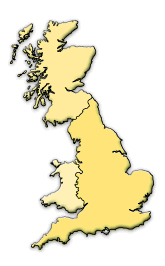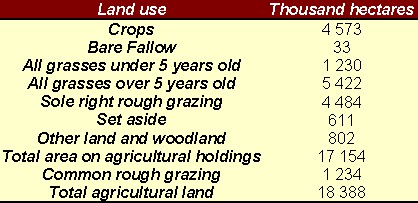
What follows is a quantitative account of the amount of land available within the UK to grow energy crops suitable for producing biofuels. These biofuels are Bioethanol produced from wheat and sugarbeet and Biodiesel produced from Oilseed Rape.
The Farming Industry employs around 557,000 farmers and farm workers and accounts for 2% of the United Kingdom’s workforce. The Farming Industry contributes £6.65 billion to the UK economy every Year (0.8%GDP). UK farmers manage around 77% of the countries land area and over one third of all agricultural land is devoted to growing arable crops. The UK is the third largest producer of cereal grains in Europe. In East Anglia, 25% of the UK’s cereal crops are grown and they also produce more than 50% of England’s entire sugar beet crop.
European Common Agricultural Policy ref15
The European Economic Community (EEC) was formed in 1958 by six countries (Belgium, France, Germany, Italy, Luxembourg
and the Netherlands). The United Kingdom joined the EEC in 1973.
The Common Agriculture Policy (CAP) was introduced by the EEC in 1962 and it’s aim was to increase European crop and
food production in order to reduce food shortages and cope with the growing needs of the European population.
Over time, the CAP led to over production of certain foods including cereals, butter and wine which were then bought by
the national Governments and stored in what were called “grain and butter mountains”.
This led to substantial storage costs due to the quantities of food being stored in warehouses and bad publicity for the
Government in light of the high costs of buying food in UK supermarkets.
In order to reduce the costs of storing such large quantities of food, the EU decided to reduce food and cereal production.
This was achieved by paying farmers European Union subsidies to set aside a certain amount of land each Year
(set-aside land).
Set-Aside Land ref11
The minimum amount of land that European and UK farmers must set aside each Year is decided by the European Union’s
Agriculture Council. This is based upon levels of crop and food production and worldwide food stock levels.
In 2001, the compulsory level or minimum level of UK set-aside land was 10%.
Small farmers with land below a certain acreage are exempt from the scheme.
Land can be set-aside as whole fields, part fields or as strips of land. Strips of land must have a minimum width of
20 metres and minimum area of 0.3 ha.
Arable Area Payments Scheme (Aaps) ref15
The Arable Area Payments Scheme was introduced in 1993 after the 1992 reform of the CAP as a method of compensating
farmers for setting aside certain areas of their land in order to reduce production of certain crops and foods.
In 2002, the crops that were eligible for payment under AAPS were:
 |
Compensation Rates
The payment rates for farmers who set-aside land in England for Years 2001 and 2002 are shown in the table below.
The 2002 rates shall apply for 2003 also.
It should be noted that the payment rates differ for Northern Ireland, Scotland and Wales also.

 |
In 2002, the total estimated land available in the United Kingdom was 24,093,000 Hectares. Approximately 18,388,000 Hectares (76%) was used for agricultural purposes.
2002 UK Agricultural Breakdown
The table below gives a detailed breakdown of the total agricultural area for the United Kingdom in Year 2002.

Land Available
Based on the information above, sourced from the DEFRA (Department
for Environment, Food and Rural Affairs) website then the most suitable available land within the UK is the 611,000 hectares
of setaside land and the 33,000 hectares of bare fallow. Giving a grant total of 644,000 hectares.
Other suitable land may include the 1,230,000 hectares of grasslands under 5 years. The suitability of this land for biofuel production is dependant on factors such as its location and therfore climate, and the lands current use, for example the grasslands may be used for grazing or to produce hay for livestock. A more detailed study would be required to assess whether this land would be suitable. For this investigation it is assumed that the available land totals that of the set aside land and the bare fallow 644,000 hectares.